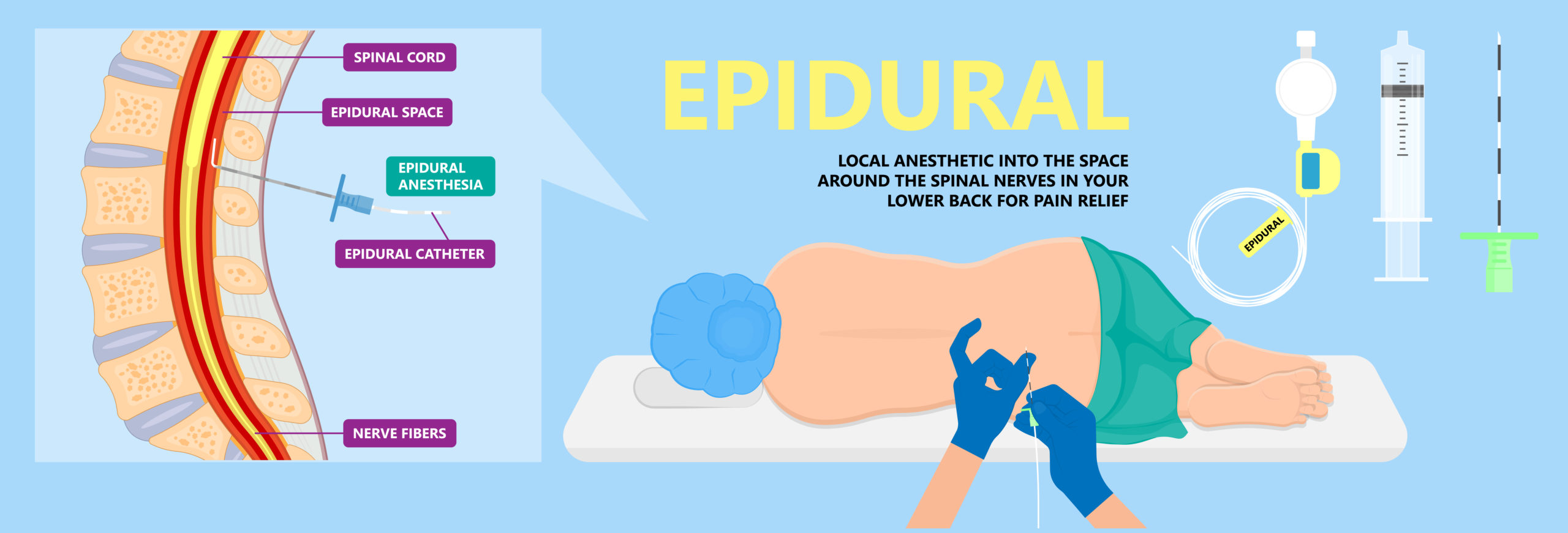Epidural Spinal Injections for Low Back Pain
Chronic lower back pain can be debilitating and significantly affect your quality of life. The Pain Management team at North Carolina Specialty Hospital understands this and offers lumbar epidural steroid injections to help manage the discomfort of conditions affecting the lower part of the spine.

Many patients experience long-lasting lower back pain relief after epidural steroid injections. In addition to improved quality of life and an increased ability to perform daily activities, reduced back pain can make it possible to complete physical therapy and rehabilitation exercises that help address the underlying cause of back pain. It’s also possible that lumbar epidural steroid injections can delay—or even eliminate—the need for back surgery.
5 Conditions that Can Be Treated with Epidural Spinal Injections
Lumbar epidural steroid injections treat lumbar radicular pain, a type of chronic pain also known as sciatica. This pain is caused by inflammation or irritation of the spinal nerve roots. Radicular pain begins in the lower back and radiates down through the buttocks and legs, sometimes reaching into the feet. In addition to pain, symptoms include a tingling or burning sensation, numbness, and muscle weakness.
The most common causes of this form of lower back pain include:
- Lumbar herniated disk. Disks are flexible, rubbery, fluid-filled cushions located in between the vertebrae. If a disk starts to bulge or crack, the fluid can put pressure on nerves, causing pain.
- Lumbar disk degeneration. If the cushioning between vertebrae wears away, it can result in painful nerve irritation.
- Lumbar spinal stenosis. When the lower spine starts to narrow in one or more places, there is less room for spinal nerve roots, which can irritate or pinch nerves.
- Lumbar osteoarthritis. Caused by aging and wear and tear, osteoarthritis can contribute to spinal stenosis and cause painful irritation of the nerves.
- Localized lower back pain. Also called axial back pain, this type of back pain can be mild or severe and has a range of causes.
Your health-care provider may recommend a lumbar epidural steroid injection for these conditions or any other type of low back pain.
Managing Lower Back Pain with Epidural Spinal Injections
Spinal injections use powerful corticosteroid medications to reduce pain. These medications are anti-inflammatory and help minimize the inflammation around the affected nerves. This can reduce or eliminate pain.
Lumbar spine injections require precision and are administered by an orthopedic surgeon, anesthesiologist, neurologist, or radiologist. The outpatient procedure typically takes about 15-30 minutes to complete.
Before you receive the injection, your provider may order imaging tests (most likely an MRI or CT) to identify the exact area that needs to be treated. During injection, fluoroscopy (a type of X-ray) guides the needle into the correct position. This depends on the cause and location of the pain. The injection might be in between the vertebrae, at the exit of the spinal canal, or just above the tailbone.
During the procedure, after sterilizing your back and administering a sedative or local anesthetic (if needed), the epidural needle is inserted. You may receive a steroid, a corticosteroid, or a mix of steroid, saline, and local anesthetic. With the local anesthetic, most patients don’t feel anything; others may feel pressure, tingling, a burning sensation, or pain when the medication is administered.
70% of Patients Report Improvement After Lumbar Epidural Steroid Injections
Epidural spinal injections are effective for reducing lower back pain. Studies report that 70% of patients who receive the injections have noticeable improvement in their pain and mobility after one month.
However, spinal injections do not provide immediate relief, and the alleviation is not permanent. It is common to experience worsening pain for several days after the injections, with full relief coming within 7-10 days after treatment. How long the pain relief lasts depends on the individual patient and their circumstances. Most people experience relief for several months, with some not requiring additional treatment for as long as a year.
That said, some people do not respond to the injections and need further treatment. Steroid injections are intended for short-term pain relief and do not address the underlying cause of the pain. Additional treatment—including spine surgery—may be necessary to cure pain.
Risks of Steroid Injections for Lower Back Pain
Epidural steroid injections are safe, but that does not mean they are without risks.
Complications are rare, but some of the potential side effects include:
- Low blood pressure
- Dizziness
- Nausea
- Allergic reaction to the medication
- Rash
- Headache due to leaking spinal fluid
- Bleeding
- Infection
- Nerve damage
- Temporary loss of bowel or bladder control
Patients are usually limited to a maximum of two or three injections per year to prevent the weakening of the bones and muscles surrounding the spine. If pain continues to affect your life and you need additional injections, your provider will discuss alternative treatments.
Alleviate Your Back Pain at North Carolina Specialty Hospital
At North Carolina Specialty Hospital, we believe that everyone deserves to live pain-free. As a leading provider of pain management for the Raleigh-Durham area, our team will work with you to ensure you are as comfortable as possible and have the best quality of life you can. Our team of providers is committed to giving the care you need to not only reduce pain but also treat the cause to keep it from disrupting your life.
If you are dealing with ongoing back pain, request an appointment with one of our Pain Management experts today.
